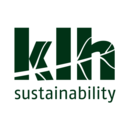A social, circular economy
Traditionally, circular economy principles aim to maximise the value of material resources at the end of their first useful life and reduce waste at each step of the value chain, by establishing process improvements, new business models and redesigning products and services. Simply put, the circular economy aims to minimise waste.
Social value (or impact) is the measurement of the contribution that development projects, investments and other mainstream businesses make to society. In part due to the Social Value Act, companies in the UK construction sector have become more interested in measuring social value, often through the development or support of a social enterprise. It can be argued that social enterprises are key in transitioning from a linear to a circular economy; social enterprises use environmental business values to achieve social good while maintaining financial sustainability.
'Meanwhile uses' are becoming more commonplace in large construction and regeneration projects, as the social value agenda seeks to keep the local community engaged and the area vibrant during long construction programmes. Meanwhile use refers to the short-term use of under-utilised space during a construction programme to deter anti-social behaviour and provide community facilities and business opportunities, until the buildings are either demolished or brought back to permanent commercial or residential use.
In identifying meanwhile uses that use waste materials from construction, clients can simultaneously pursue their social and environmental objectives and deliver a true circular economy, where waste is dealt with in the upper echelons of the waste hierarchy to the benefit of local communities and the local environment.
Two great examples of such an approach are:
- The Kings Cross Skip Garden.
- Frontside Gardens, a temporary skatepark on an unused parcel of land in Hackney Wick, largely constructed using waste materials from the Olympic Games.
There are endless opportunities for construction and regeneration projects when a social, circular economy approach is taken. However, due to storage, material segregation and logistical constraints, it is challenging for the developer to do this alone. Support from local councils as well as other key stakeholders such as local volunteers, principle contractors and their waste management providers is crucial.
As the new London Plan emerges, there is expected to be a greater focus on all things material, as increasingly ambitious waste and recycling targets are set, a circular economy statement becomes a requirement of planning, and embodied carbon reporting enters the mainstream.
KLH Sustainability recently embarked on a journey to develop a circular economy strategy for a client with a strong social purpose. This bespoke strategy aims to reduce waste generation and materials consumption at all stages of the building life-cycle, while maximising social impact and economic return on investment. Through this systems-thinking approach a robust strategy emerged. The client is currently phasing implementation of their strategy into a large regeneration project in South London, including the exploration of meanwhile uses, delivered as a social enterprise.
[edit] Related articles on Designing Buildings Wiki
- 5 things leaders can do to create a truly circular economy.
- Circular economy.
- Circular economy in the built environment.
- Circular economy - transforming the worlds number one consumer of raw materials.
- Construction waste.
- Cradle to cradle product registry system.
- Design for deconstruction.
- End of life potential.
- Green supply chain management.
- Impact of the sharing economy on construction craft labour and equipment markets.
- Meanwhile use.
- Recycling.
- Social Value Act.
About the wiki
Anyone is welcome to use and contribute to the wiki in different ways.
[edit] Engaging with the wiki
You can:
- Contribute to existing articles
- Create articles
- Share articles through social media and other channels
- Contact the CIRCuIT project to let us know what you think and how we can improve
[edit] Add your own content
To contribute to or create an article, you can follow these steps:
- Register as a user
- Read through the editorial policy and guidance on writing and contributing to articles
- See the detailed help page on tips on writing wiki articles
- Try editing a test article
- If editing an article, select 'Edit this article' underneath the article title
- If creating a new article, select 'Create an article'. In the 'Select categories' area, expand the 'Industry context' list and tag 'Circular economy' to add your article to this wiki
[edit] Who is this wiki for?
The articles contain information on implementing circular economy approaches in construction that could be relevant to:
- Architects
- Construction contractors
- Designers
- Developers, owners, investors
- Engineers
- Landowners
- Manufacturers and supplier
- Universities and research
- Urban planners
[edit] About CIRCuIT
The Circular Economy wiki is supported by the Circular Construction in Regenerative Cities (CIRCuIT) project, which is funded by the European Union's Horizon 2020 research and innovation programme. CIRCuIT is a collaborative project involving 31 ambitious partners across the entire built environment chain in Copenhagen, Hamburg, Helsinki Region and Greater London. Through a series of demonstrations, case studies, events and dissemination activities, the project will showcase how circular construction practices can be scaled and replicated across Europe to enable sustainable building in cities and the transition to a circular economy on a wider scale.







